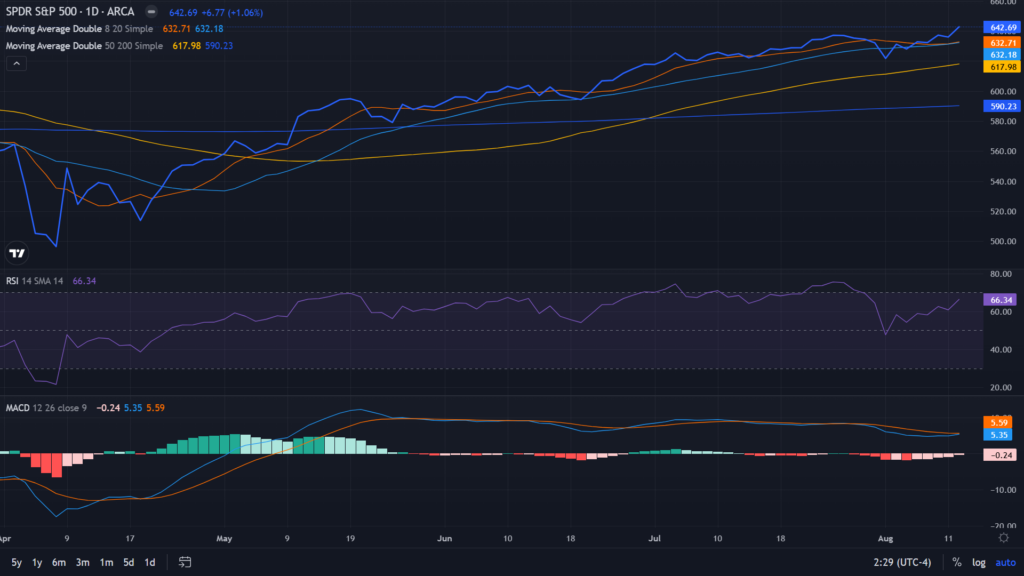
The S&P 500 has climbed to new heights, closing above the 6,400 mark for the first time and marking its 16th all-time high of the year.
What Happened: This persistent rally, coming after a record-setting 57 all-time highs in 2024, is being propelled by a combination of a robust job market and growing expectations of a Federal Reserve rate cut. According to market experts, the index is continuing its upward trajectory despite a “wall of worry” that includes concerns over tariffs, inflation, and high valuations.
The 16th record of the S&P 500 index in 2025 was the fifth most of any year in history, as pointed out by Charlie Billelo of Creative Planning.
“Markets are continuing to climb a wall of worry,” noted Chris Zaccarelli, Chief Investment Officer for Northlight Asset Management. He believes the bull market will persist as long as the unemployment rate remains low and inflation is not high enough to deter the Fed.
The prospect of a Fed rate cut, which seems more likely following recent jobs and inflation reports, is a major driver of this optimism. Zaccarelli suggests it's rare for the Fed to cut rates when a recession isn’t imminent, which is a key factor getting investors excited.
This positive sentiment is not just benefiting technology and growth stocks. Eric Teal, Chief Investment Officer for Comerica Wealth Management, highlighted that the prospect of rate cuts bodes well for “traditional value sectors and small cap stocks.” These areas have lagged the market and are now “primed to lead the market higher as breadth expands.”
The S&P 500's V-shaped recovery, following a 20% drawdown, has been remarkably strong. As Jurrien Timmer of Fidelity Investments pointed out, the index remains “in the running for the fastest and strongest recovery ever.”
Why It Matters: A fully employed economy gives people money to spend and invest, pushing stock prices higher and higher.
This broad-based strength, combined with the prospect of a more accommodative monetary policy, is providing the foundation for the S&P 500’s record-breaking run.
According to Benzinga Pro, the technical chart of SPDR S&P 500 ETF Trust (NYSE:SPY), tracking the S&P 500 index, shows a strong price momentum with its price being higher than the short and long-term simple daily moving averages.
Its relative strength index, although nearing the overbought 70-mark, is still in the neutral zone at 66.34.
However, its MACD indicator shows that the MACD line of 5.35 was below the signal line of 5.59, signaling that its 12-day exponential moving average was below its 26-day EMA, pointing to a possible reversal in the ongoing rally.

Price Action: The SPY and Invesco QQQ Trust ETF (NASDAQ:QQQ), which track the S&P 500 index and Nasdaq 100 index, respectively, closed higher on Tuesday. The SPY was up 1.06% at $642.69, while the QQQ advanced 1.26% to $580.05, according to Benzinga Pro data.
On Wednesday, the futures of the S&P 500, Dow Jones, and Nasdaq 100 indices were mixed.
Read Next:
Disclaimer: This content was partially produced with the help of AI tools and was reviewed and published by Benzinga editors.
Photo courtesy: Shutterstock